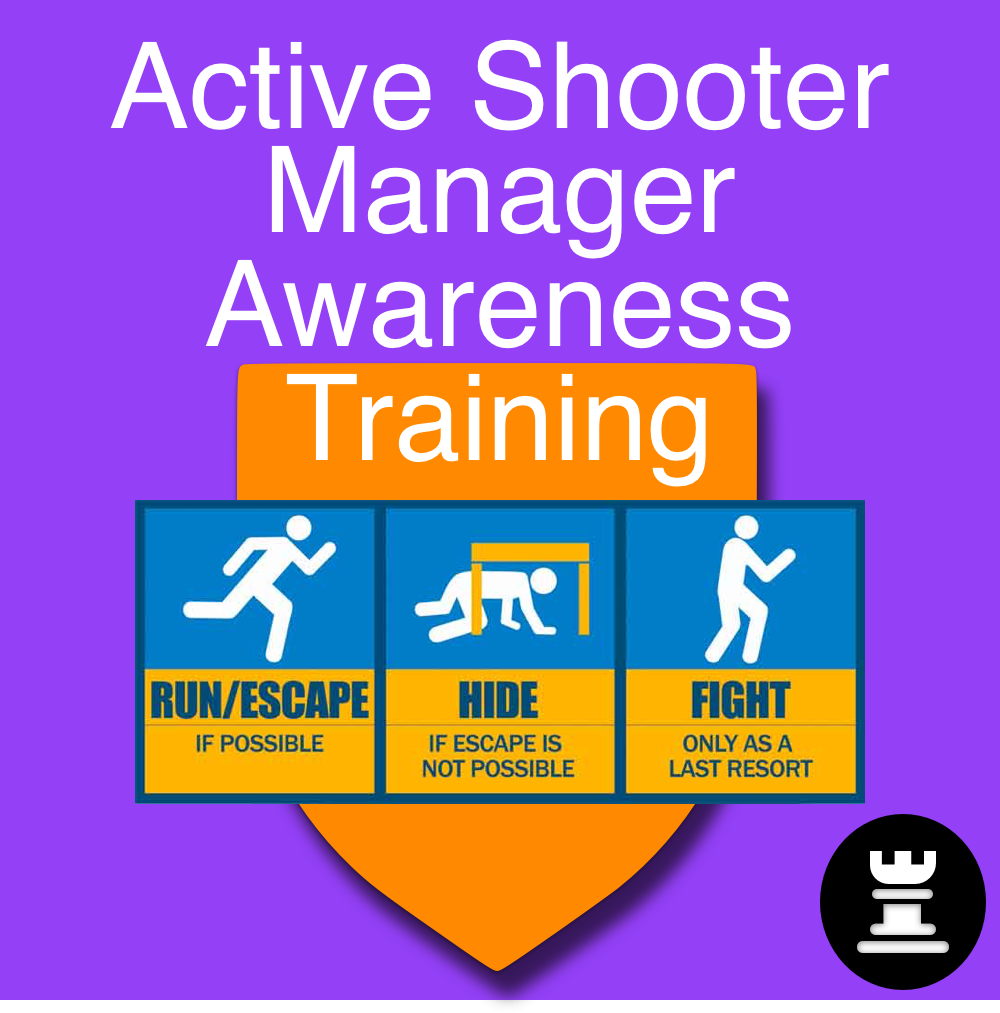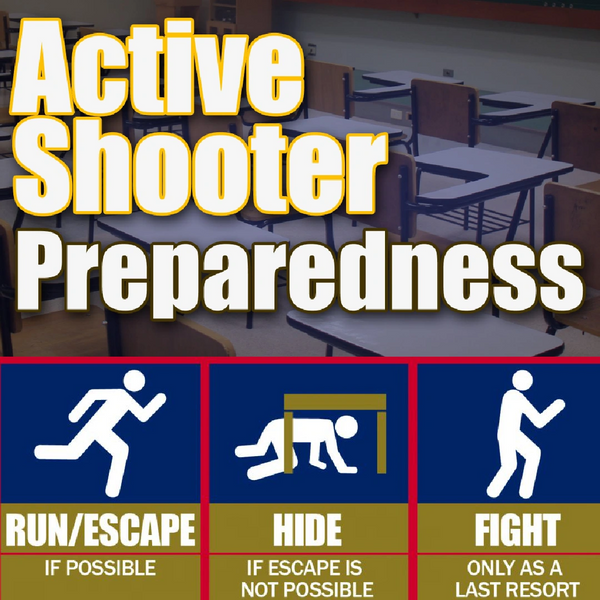The Advantages of Recurring Active Shooter Training for Neighborhood Security
The Advantages of Recurring Active Shooter Training for Neighborhood Security
Blog Article
Implementing Active Shooter Training: Ideal Practices for Producing a Safe and Prepared Area Setting
As areas confront the distressing truth of energetic shooter events, the implementation of extensive training programs comes to be vital. An effective method pivots on not just the advancement of tailored curricula that resolve neighborhood dangers but also the involvement of varied stakeholders. By using a range of training techniques, communities can guarantee that all members are outfitted with essential abilities. The challenge lies in maintaining an adaptive framework that develops with arising risks. What are the critical elements that can transform a common training program right into a robust model for area resilience?

Recognizing the Need for Educating
In an age noted by increasing cases of violence in public areas, understanding the demand for active shooter training has never ever been extra critical. Extensive training campaigns can gear up participants with the knowledge and abilities to react decisively.
Training promotes a sense of empowerment and preparedness, making it possible for people to really feel even more protected in their surroundings. The advantages of active shooter training expand past immediate action; they consist of improving interaction procedures and enhancing overall security measures within organizations.
Secret Parts of Effective Programs
Reliable energetic shooter training programs include numerous key components that enhance preparedness and feedback abilities. Thorough curriculum growth is vital, making sure that training material is appropriate, evidence-based, and tailored to the certain demands of the organization or neighborhood. This consists of comprehending the characteristics of energetic shooter cases and the psychological influence on individuals included.
2nd, practical training scenarios ought to be employed to simulate possible situations, allowing individuals to exercise decision-making and feedback strategies in a controlled environment. These drills assist in muscle mass memory and construct confidence among participants.
Third, an emphasis on communication methods is crucial. Establishing clear lines of communication among legislation enforcement, emergency -responders, and individuals makes sure worked with responses throughout an event. Regular updates and correspondence course assist maintain interaction paths clear and effective.
Fourth, recurring assessment and comments systems ought to be incorporated into the training program - active shooter training. Examining the effectiveness of training via individual feedback and efficiency metrics enables continual improvement
Last but not least, fostering a society of safety and security and readiness within the area motivates vigilance and positive procedures, making sure that people are not only skilled however additionally involved in preserving a protected atmosphere.
Engaging Community Stakeholders

To efficiently engage these stakeholders, it is important to communicate the objectives and advantages of the training. Organizing informational sessions can help clarify the training's objective, address concerns, and detail the duties each stakeholder might play. Creating a stakeholder advising committee can facilitate recurring discussion, enabling for varied perspectives and understandings to be integrated right into the training program.
Building connections with community leaders and companies is likewise vital. Their assistance can boost outreach efforts, boost engagement, and make sure that training is customized to the distinct requirements of the area. Additionally, stakeholders can help in disseminating information and Visit Website sources, strengthening the message of safety and preparedness.
Eventually, engaging community stakeholders not just reinforces the training campaign but likewise grows a sense of ownership amongst residents, causing a much more resistant and informed area qualified of reacting successfully to possible threats.
Training Distribution Approaches
Making use of a variety of training shipment techniques is important to accommodate the varied understanding styles and needs of participants in energetic shooter training programs (active shooter training). Reliable training can take numerous types, including lectures, hands-on simulations, on the internet modules, and interactive workshops. Each method offers an one-of-a-kind objective and can improve the overall knowing experience

Online modules offer adaptability and access, allowing individuals to learn at their own rate. These can include video clips, tests, and discussions to assess understanding. Interactive workshops urge seminar and problem-solving, promoting synergy and communication skills.
Integrating a combined method that incorporates these methods not only improves the training experience yet also makes sure that individuals are much better prepared to react efficiently in case of an energetic shooter situation (active shooter training). By addressing different discovering choices, organizations can produce an extra enlightened and responsive neighborhood
Constant Analysis and Enhancement
Routine evaluation and improvement of active shooter training programs are important important link to preserving their relevance and performance. As dangers progress, so have to the methods and techniques used in training. Continual evaluation ensures that training web content reflects the current intelligence on active shooter incidents, incorporating lessons picked up from recent events and adjusting for arising fads.
To promote this process, organizations must establish responses devices that consist of participant examinations, specialist reviews, and incident debriefs. Collecting information on individual performance during drills and exercises is important, as it highlights locations requiring renovation and notifies future training sessions. Additionally, involving with regulation enforcement and emergency situation responders can provide beneficial insights into the functionality and applicability of training protocols.
Frequently scheduled testimonials of training materials and techniques ought to be mandated, promoting a setting of technology and flexibility. Organizations should also motivate a society of continuous knowing, where employee really feel equipped to recommend modifications based upon their experiences. By dedicating to continuous examination and enhancement, organizations not just enhance the performance of their active shooter training programs yet also strengthen their general dedication to security and readiness within the community.
Verdict
Finally, reliable implementation of active shooter training demands a detailed strategy that prioritizes area engagement and practical simulations. By developing tailored educational programs, including varied training methods, and promoting image source cooperation among stakeholders, neighborhoods can boost readiness. Constant analysis and feedback systems are necessary for adapting programs to emerging hazards, consequently reinforcing total safety. Eventually, a dedication to recurring training and improvement cultivates a culture of alertness and readiness, guaranteeing a more secure setting for all community members.
Report this page